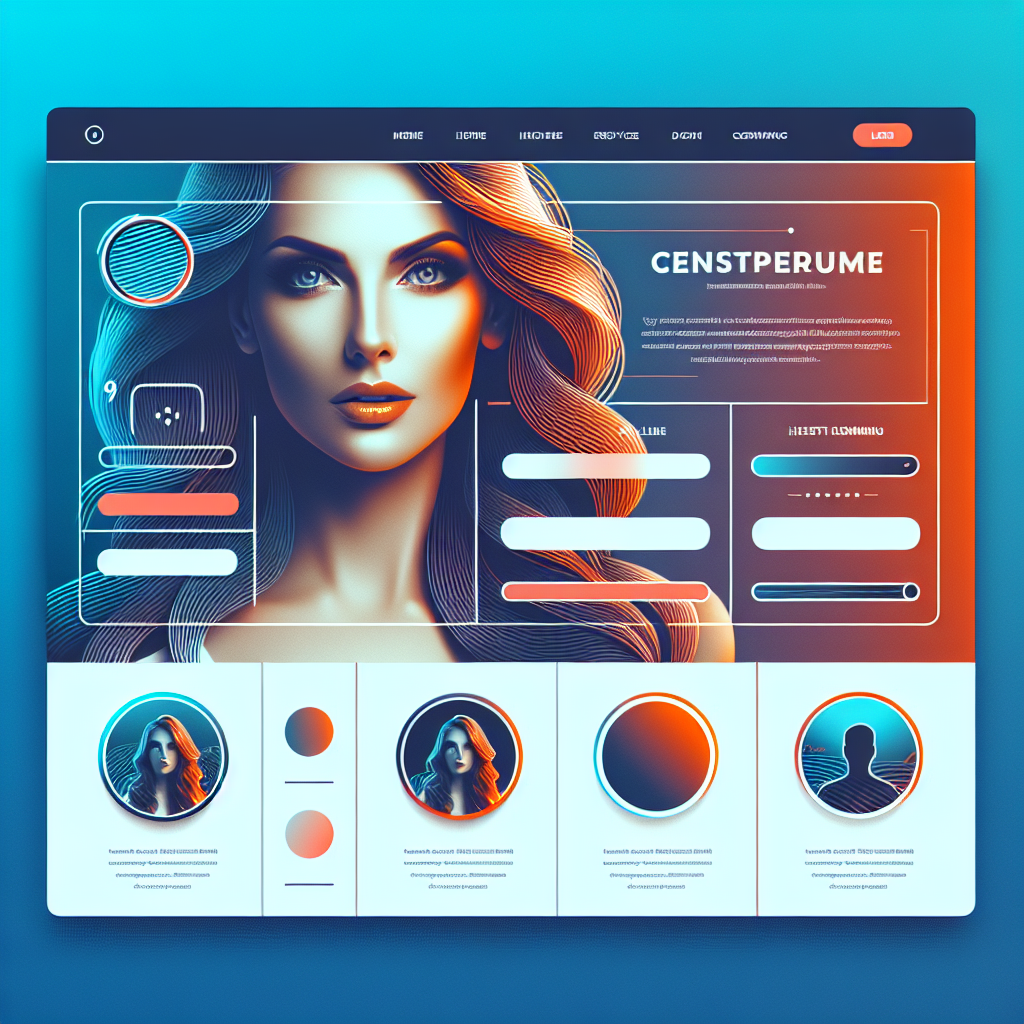Welcome to the world of Divi Theme Development, where creativity meets functionality. The Divi theme, developed by Elegant Themes, is renowned for its versatility and ease of use, making it a favorite among web designers and developers. Whether you’re a seasoned professional or a newcomer to the field, mastering Divi can significantly enhance your web design skills.
Divi’s drag-and-drop interface allows you to build stunning, responsive websites without touching a single line of code. This feature alone makes it an attractive option for those who want to focus on design and user experience. Moreover, Divi comes with a plethora of pre-made layouts and modules that can be customized to fit the unique needs of any business or project.
One of the standout features of Divi is its real-time visual editor, which lets you see your changes as you make them. This immediate feedback loop is invaluable for fine-tuning the aesthetics and functionality of your site. Additionally, Divi is SEO-friendly, ensuring that your site performs well in search engine rankings.
As you delve deeper into Divi Theme Development, you’ll discover a range of advanced features like global elements, split testing, and an integrated lead generation system. These tools empower you to create websites that are not only visually appealing but also optimized for performance and conversions.
Ready to take your web design skills to the next level? Get a quote at https://guru-is.com/#contact and start revolutionizing your web presence today!
Setting Up Your Divi Environment

Before diving into the intricacies of Divi Theme Development, it’s crucial to set up your working environment properly. A well-organized setup can save you time and help you make the most out of Divi’s powerful features.
First, ensure you have a reliable hosting provider that supports WordPress. While Divi is versatile, it performs best on a robust hosting environment that can handle its various functionalities. Many hosting providers offer one-click WordPress installations, simplifying the initial setup process.
Once your hosting is ready, the next step is to install WordPress. This typically involves downloading the WordPress package, uploading it to your server, and following the installation wizard. After WordPress is up and running, you’ll need to purchase and download the Divi theme from the Elegant Themes website.
To install the Divi theme, log in to your WordPress dashboard, navigate to Appearance > Themes, and click on Add New. Upload the Divi zip file and activate the theme. You’ll also need to enter your Elegant Themes API key to receive updates and access premium features.
With Divi installed, consider setting up essential plugins that complement its functionality. Plugins for SEO, security, and performance optimization can enhance your site’s overall effectiveness. Popular choices include Yoast SEO, Wordfence Security, and WP Rocket for caching.
Finally, familiarize yourself with the Divi Builder interface. Spend some time exploring its various modules, settings, and customization options to get a feel for how it works. This hands-on experience will be invaluable as you proceed with your Divi Theme Development journey.
Essential Tools for Divi Development

To excel in Divi Theme Development, equipping yourself with the right tools is essential. These tools not only streamline your workflow but also enhance your ability to create stunning and functional websites with Divi.
First on the list is a robust *text editor* or *Integrated Development Environment (IDE)*. Tools like Sublime Text, Visual Studio Code, or Atom offer advanced features such as syntax highlighting, code snippets, and version control integration, making your coding process more efficient and error-free.
Next, a reliable *browser developer tool* is indispensable. Chrome DevTools or Firefox Developer Tools allow you to inspect elements, debug JavaScript, and fine-tune CSS directly within the browser. These tools are crucial for diagnosing and fixing layout or functionality issues in real-time.
Another essential tool is a *version control system* like Git. Version control allows you to track changes, collaborate with team members, and revert to previous states if something goes wrong. Platforms like GitHub or GitLab provide repositories where your code can be securely stored and shared.
For those looking to push their Divi designs to the next level, *graphic design tools* like Adobe Photoshop, Illustrator, or Sketch are invaluable. These tools help you create custom graphics, icons, and layouts that can be seamlessly integrated into your Divi projects.
Additionally, consider using *CSS preprocessors* like Sass or LESS. These tools enable you to write more efficient and organized CSS, incorporating variables, nested rules, and mixins to streamline your styling process.
Lastly, ensure you have a suite of *testing tools*. Services like BrowserStack or CrossBrowserTesting allow you to test your site across multiple browsers and devices, ensuring a consistent user experience.
By incorporating these essential tools into your development arsenal, you’ll be well-equipped to tackle any challenge that comes your way in Divi Theme Development.
Customizing Divi Themes Effectively
Customizing Divi themes effectively can turn a generic template into a unique and engaging website that stands out. The Divi Theme, known for its flexibility and user-friendly interface, offers numerous ways to tailor your site to meet specific needs and preferences.
One of the most powerful tools in Divi is the *Visual Builder*. This drag-and-drop editor allows you to see changes in real-time, making it easier to experiment with different layouts, color schemes, and content arrangements. Use the Visual Builder to adjust the structure of your pages, add or remove sections, and customize modules to fit your design vision.
For more advanced customization, leverage the *Theme Customizer*. This built-in WordPress tool provides options for adjusting global settings such as typography, header and footer layouts, and color schemes. It’s an excellent way to maintain consistency across your website while giving you control over the finer details of your design.
Another effective method for customization is through *Custom CSS*. Divi allows you to add custom CSS directly within the Visual Builder or Theme Options panel. This feature enables you to fine-tune the appearance of your site beyond what is possible with the default settings. Whether you want to adjust spacing, alter hover effects, or implement media queries, custom CSS can help achieve these advanced design tweaks.
For those comfortable with code, creating a *child theme* is a best practice. A child theme allows you to make customizations without affecting the original theme files. This approach ensures that your changes won’t be lost when the theme is updated. With a child theme, you can add custom PHP functions, modify template files, and incorporate third-party scripts safely.
Finally, take advantage of Divi’s extensive *library of pre-made layouts and templates*. These resources can provide a solid foundation for your design, which you can then customize to suit your brand. By combining these ready-made layouts with your unique content and customizations, you can create a polished and professional website quickly and efficiently.
By utilizing these methods, you can effectively customize Divi themes to create a website that not only looks great but also performs well and meets your specific needs.
Optimizing Performance in Divi

Optimizing performance in Divi is crucial to ensure your website loads quickly and provides a smooth user experience. A fast-loading website not only improves user satisfaction but also positively impacts your search engine rankings.
Start by *minimizing HTTP requests*. Each element on your page, such as images, scripts, and stylesheets, requires an HTTP request. By reducing the number of these elements, you can significantly improve load times. Utilize Divi’s built-in features to combine and minify CSS and JavaScript files, which reduces the number of requests and file sizes.
Another effective strategy is to *optimize your images*. Large, unoptimized images are one of the most common culprits of slow-loading websites. Use tools like TinyPNG or JPEGmini to compress your images without sacrificing quality. Additionally, consider implementing lazy loading, which defers the loading of images until they are needed, further speeding up your initial page load.
Enabling *caching* can also make a significant difference. Caching stores a static version of your site, allowing it to load faster for returning visitors. WordPress plugins like W3 Total Cache or WP Super Cache are excellent for setting up caching on your Divi site.
Take advantage of *Content Delivery Networks (CDNs)* to deliver your content more efficiently. CDNs distribute your site’s static files across multiple servers worldwide, ensuring that users load content from a server closest to their location. This reduces latency and speeds up load times for global visitors.
Another tip is to *manage your plugins* carefully. While plugins add valuable functionality, having too many or poorly coded plugins can slow down your site. Regularly review and deactivate any plugins that are not essential to your site’s operation. Ensure that all active plugins are up-to-date and well-maintained.
Finally, ensure your website is running on a *reliable hosting provider*. A good hosting provider offers optimized server configurations, faster response times, and better overall performance. Consider using managed WordPress hosting services that are specifically tailored to maximize the performance of WordPress sites, including those using Divi.
By implementing these optimization techniques, you can significantly enhance the performance of your Divi-powered website, leading to faster load times, improved user experience, and better search engine rankings.
Advanced Divi Development Techniques

Taking your Divi theme development to the next level involves mastering advanced techniques that can help you create more dynamic and customized websites. One of the most powerful tools at your disposal is *custom CSS and JavaScript*. While Divi offers many customization options out of the box, learning CSS and JavaScript allows you to go beyond and fine-tune every aspect of your design. You can add custom animations, create unique layouts, and improve user interactions.
Another essential technique is leveraging *Divi’s Hooks and Filters*. These are WordPress features that allow you to modify or extend Divi’s functionality without altering the core code. By using hooks and filters, you can add custom functionality to your site, such as dynamic content or specialized features, ensuring your site remains robust and up-to-date with Divi updates.
If you’re looking to create a more personalized experience for your users, consider implementing *conditional logic*. Conditional logic allows you to show or hide elements based on user actions or specific conditions. For example, you could create a form that changes its fields based on previous inputs, or display different content to users based on their location or device.
Another advanced technique is to *integrate third-party APIs*. APIs (Application Programming Interfaces) allow your Divi site to communicate with other software and services. This can be incredibly useful for retrieving external data, automating tasks, or adding complex functionalities like payment gateways or social media feeds. For example, integrating with Google Maps API can help you display interactive maps, while using a weather API can show real-time weather updates on your site.
Lastly, consider *optimizing your back-end processes*. Efficient back-end processes ensure that your site runs smoothly and can handle high traffic volumes. This includes optimizing your database, using advanced caching techniques, and ensuring your server configurations are tailored for performance. Tools like WP-Optimize can help you clean and optimize your database, while server-side caching solutions like Varnish can significantly reduce load times.
By mastering these advanced Divi development techniques, you can create highly customized, efficient, and user-friendly websites that stand out from the competition. Ready to take your Divi development to the next level? Get a quote at Guru-is.com and let’s build something amazing together!

